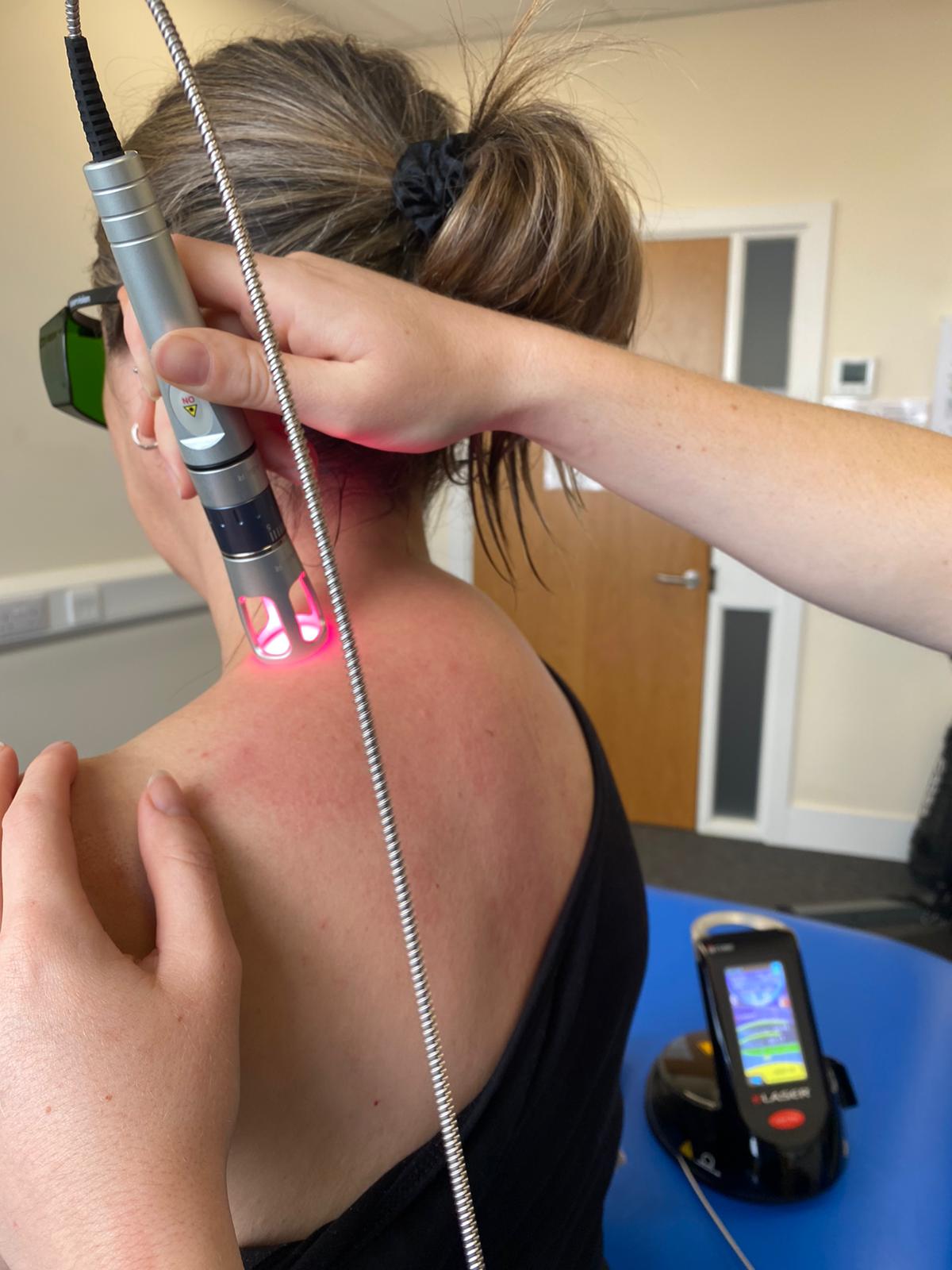Treatment can also be further customised to account for the particular skin colour and body size of the patient to ensure the desired therapeutic results.
By working at a cellular level, this therapy can deliver patients faster healing and relief from pain conditions that are inhibiting their quality of life and performance. This innovative technology has become the treatment option of choice for many athletes and sports clubs looking to help their members get back to top condition faster. Even for the ordinary person that is recovering from surgery, a work injury or just seeking relief from an acute or chronic condition, this treatment can offer multiple benefits.
1. Pain relief
Photobiomodulation promotes pain relief by boosting serotonin levels that improve a patient’s mood and help numb nerve transmission. It also increases the synthesis of beta-endorphins that decrease pain at receptor sites. The treatment further stimulates nitric oxide production, which as a neurotransmitter, can impact direct and indirect pain sensations. It also reduces bradykinin levels that cause pain to be more pronounced. Pain reduction is also achieved through ion channel normalisation, nerve cell regeneration, and axonal sprouting.
Effective results have been achieved for both acute and chronic pain conditions. The pain relief effect can often be felt right from the first session. Many have reported a long-lasting impact after just two sessions. All this is accomplished without side effects that can often come from using other treatment options like medication to manage pain.
2. Reduction in inflammation
The use of laser therapy also triggers several biological mechanisms that relieve inflammation. These mechanisms include the production of ATP and increased cellular metabolism. Stimulating the production of nitric oxide and reactive oxygen species helps promote vasodilation, circulation, the delivery of oxygen, sugars, salts and proteins, and improves waste removal. This cascade of events allows the tissues to move past the inflammatory phase faster and promotes quicker healing.
3. Faster tissue repair and cell growth
Photobiomodulation can induce faster tissue repair and wound healing by stimulating such actions as macrophage activity, leukocyte infiltration, keratinocyte proliferation and neovascularization. It also induces higher levels of growth factor for cell regeneration with greater wound tensile strength. It results in better quality scar tissue and a reduction in adhesions.
By stimulating the production of nitric oxide, not only does laser therapy help to promote vasodilation that boosts oxygen and nutrient delivery to the injured area for faster healing, but it also stimulates the process of neovascularisation which stimulates new capillaries to form and further speed up the healing process.
4. Better nerve function
Often where there is physical injury, there is also likely to be damaged nerves. Damage to nerves can lead to problems like numbness and other impaired sensations. These compromised nerve cells can cause even non-noxious activities to elicit pain in a patient, resulting in a lower than normal pain threshold. Laser therapy stimulates cell regeneration that can help to heal nerve damage and promote pain relief.
5. Patient comfort
Laser therapy sessions can last as little as 15 minutes or less. And as said, the patient can begin to feel relief right from the first session. The treatment is totally pain-free. When the treatment head is applied to the skin, some may even feel a massage-like sensation and some soothing warmth. It is a comfortable experience for patients, with relief achieved in a matter of minutes.


